Jerry Clement’s steam launch
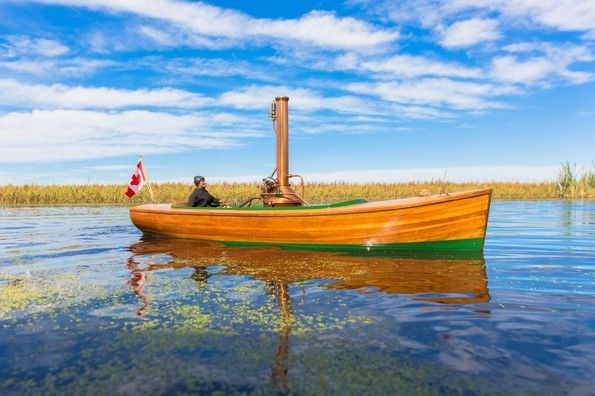
Named after my daughter, Jennifer was built in the domestic machine shop. The model was actually designed and built some years ago and this miniature steam launch is modelled on a typical full-size 1890’s steam launch, although somewhat scaled-down in size. It has a propane fired boiler with a working twin cylinder steam engine, several water pumps and let’s now go through it all.
Construction
Enjoy more Model Boats Magazine reading in the monthly magazine.
Click here to subscribe & save.
Jennifer is 42 inches long with a beam of 13 inches and draws 6 inches when on the water. Weight is 35 pounds and it took two years to build over a couple of winters. The hull is of cedar planking over plywood bulkheads. All the planks were stripped on a vintage, but restored, Atlas table saw. The deck consists of spruce and cedar planks with black tar-paper separating them. All the planks have been glued and dowelled in place with round toothpicks used for the dowels. The hull has been finished with green paint below the waterline and many coats of clear Varathane (Rust-Oleum) varnish over the complete hull.
Steam plant
The vertical boiler was a very interesting project with its upper smoke-box formed from sheet copper over a wooden pattern that was turned from hardwood on the lathe. The upper and lower heads of the copper boiler were formed from 1/8 inch (3mm) copper sheeting, again using prepared wooden patterns. Probably the most challenging part of building this boiler was the silver soldering of the main boiler components. Assembly included the main shell; the upper and lower heads and the sixty-one 1/4 inch (6mm) copper flue tubes that run between them. A ‘rosebud’ heating tip with an acetylene outfit generated the heat required to solder this whole assembly using 45% silver solder. Once completed, the boiler was pressure tested at three times its working pressure, before it was fired for the first time.
The boiler is propane fired with the burner burn rate controlled by the boiler pressure. A pilot light relights the burner if the flow of propane is shut down due to high boiler pressure. The two safety valves located on the boiler have never blown, due to this arrangement of the boiler pressure actually controlling the burner. The main burner utilises a spark lighter for initial ignition purposes.
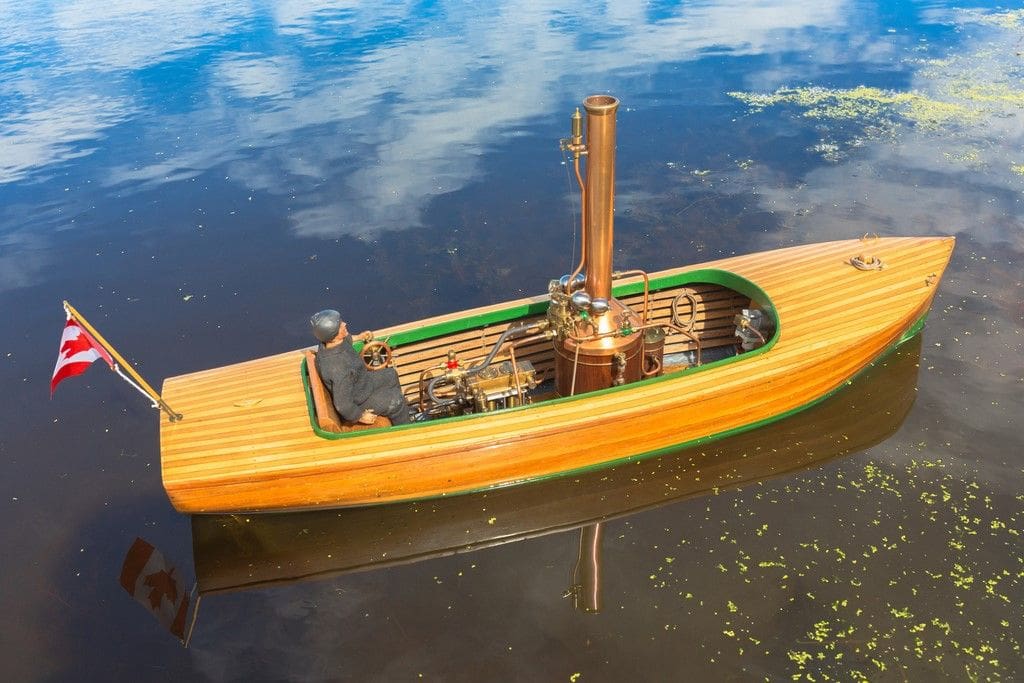
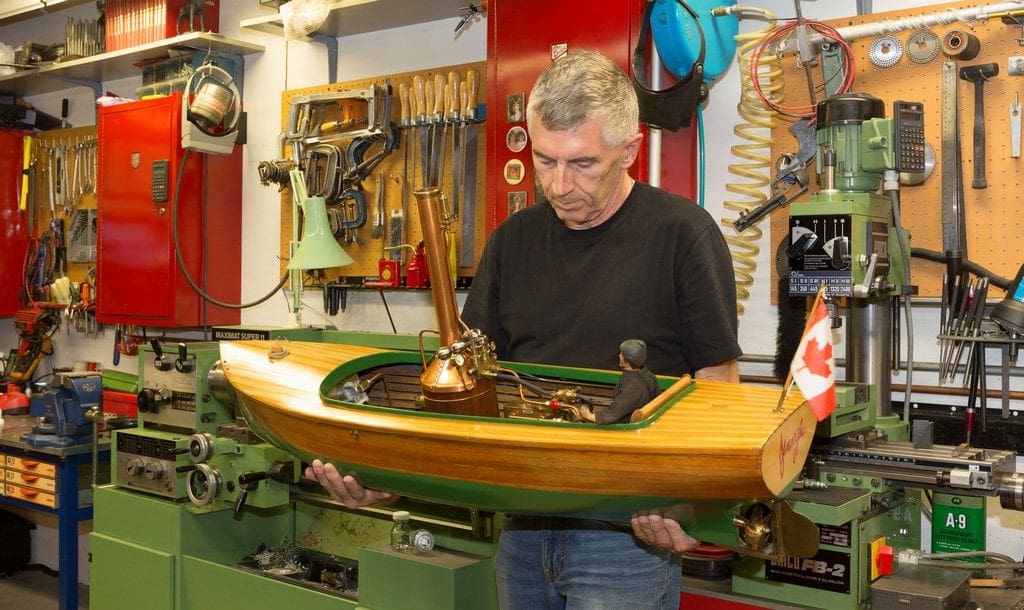
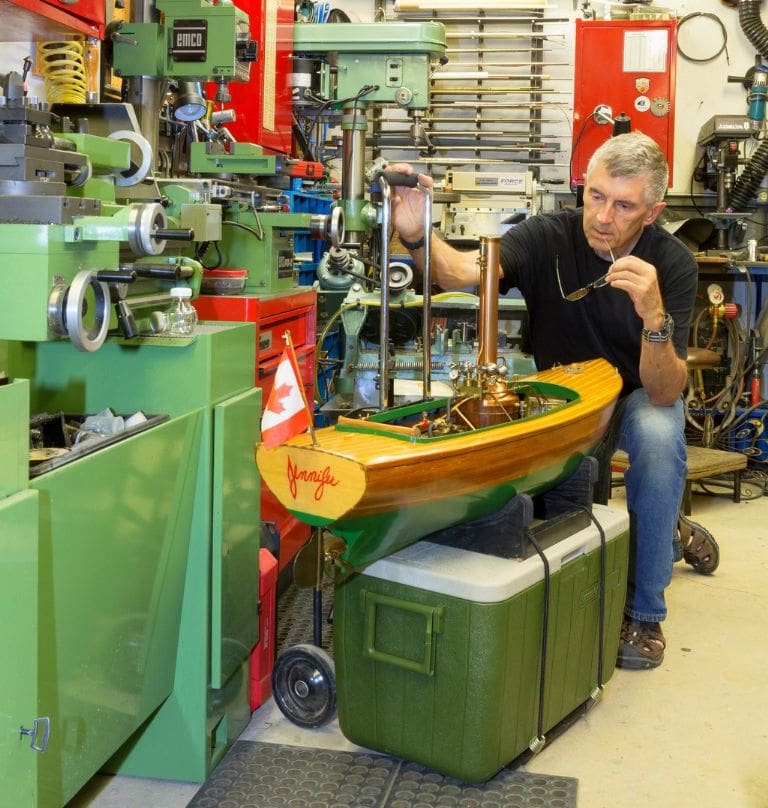
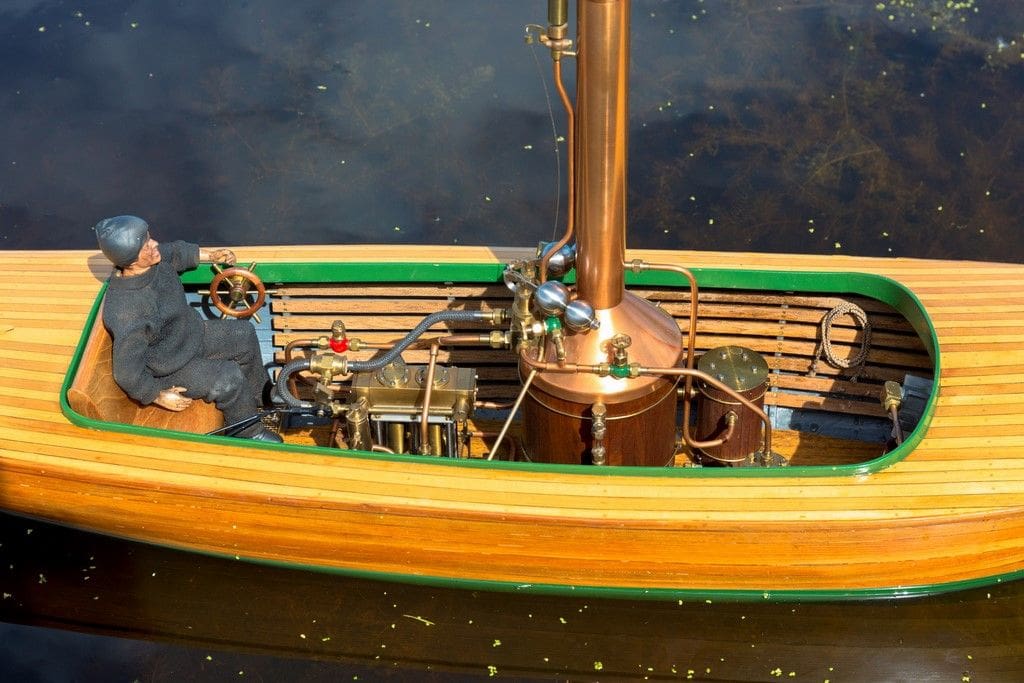
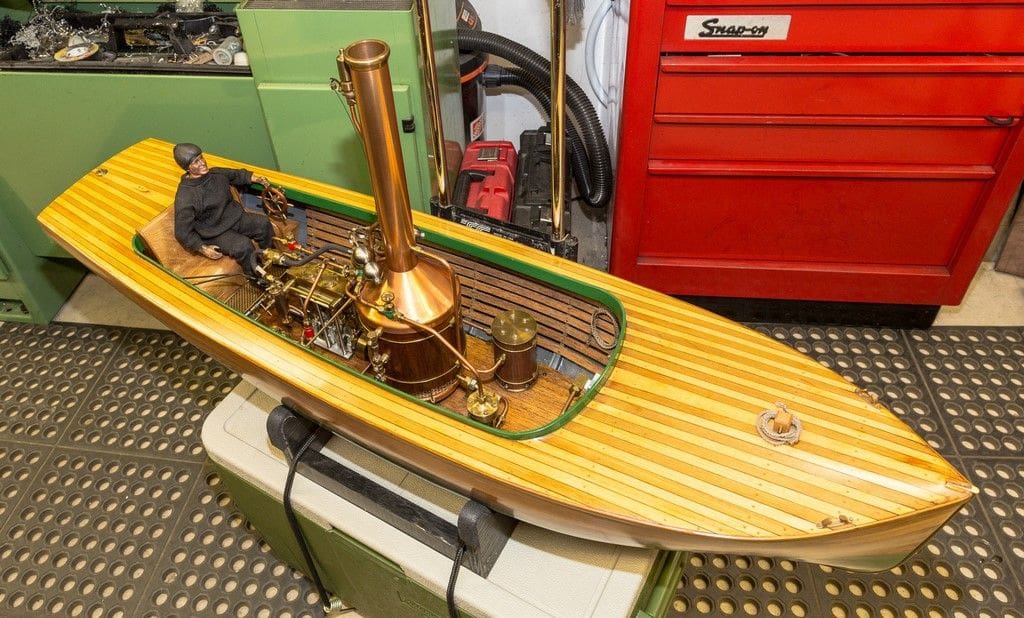
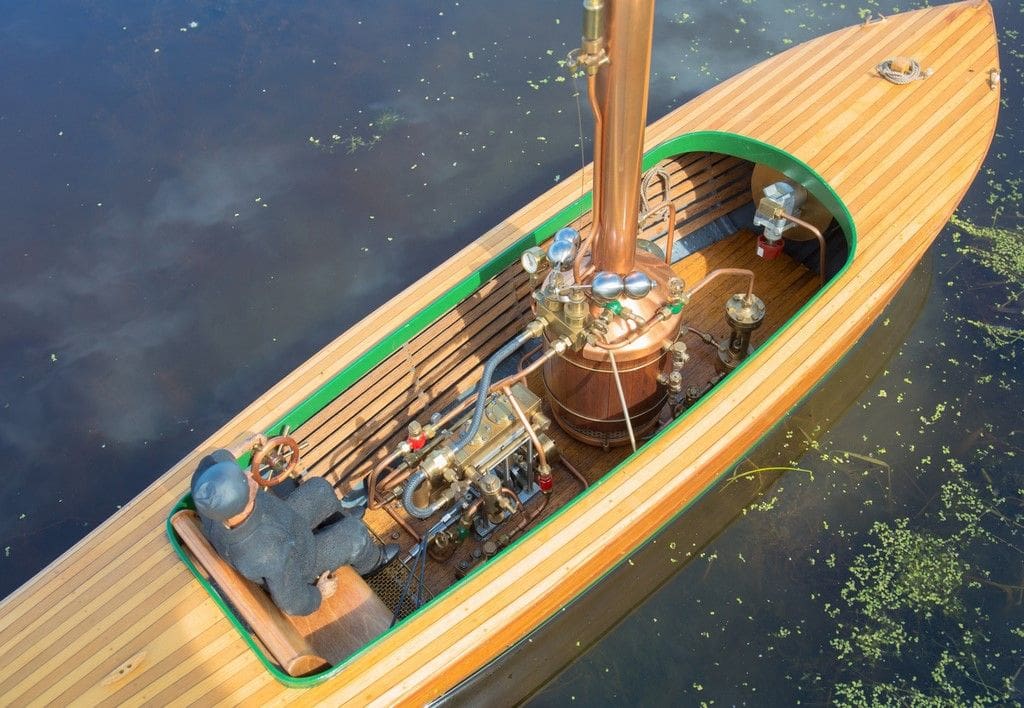
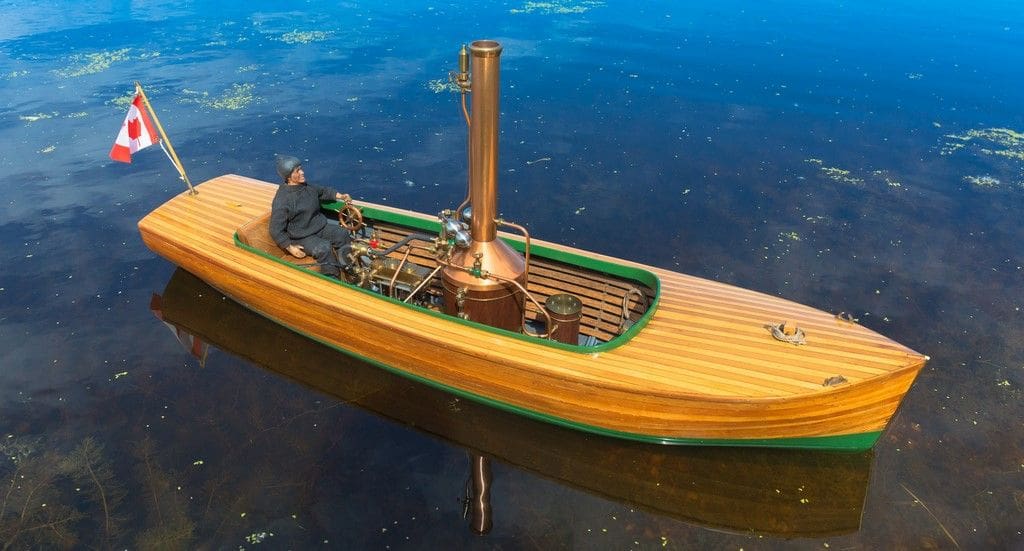
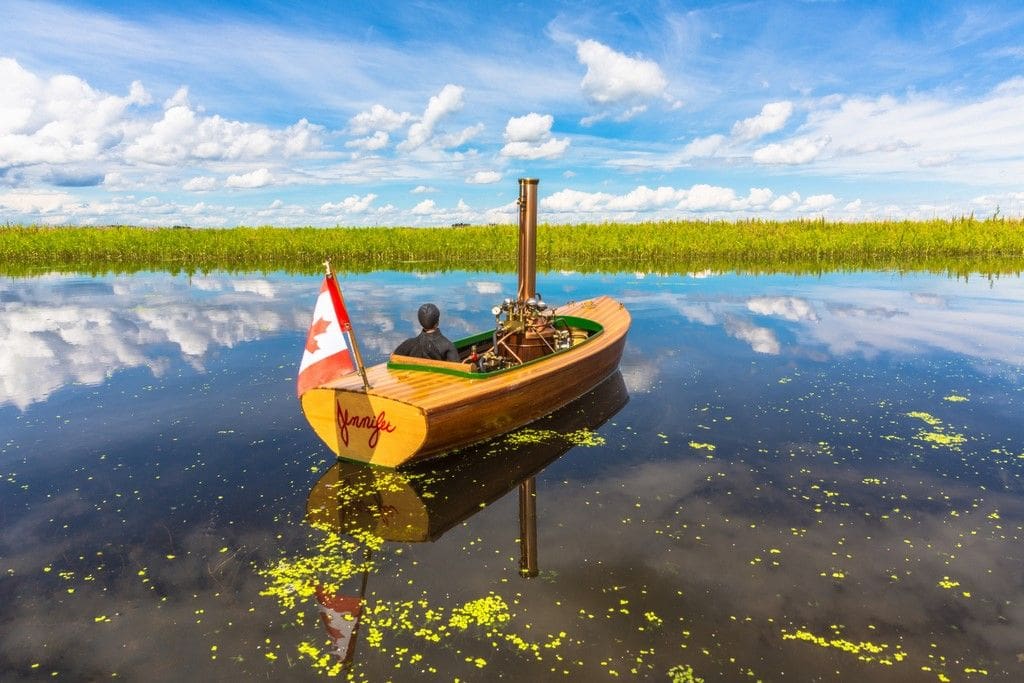
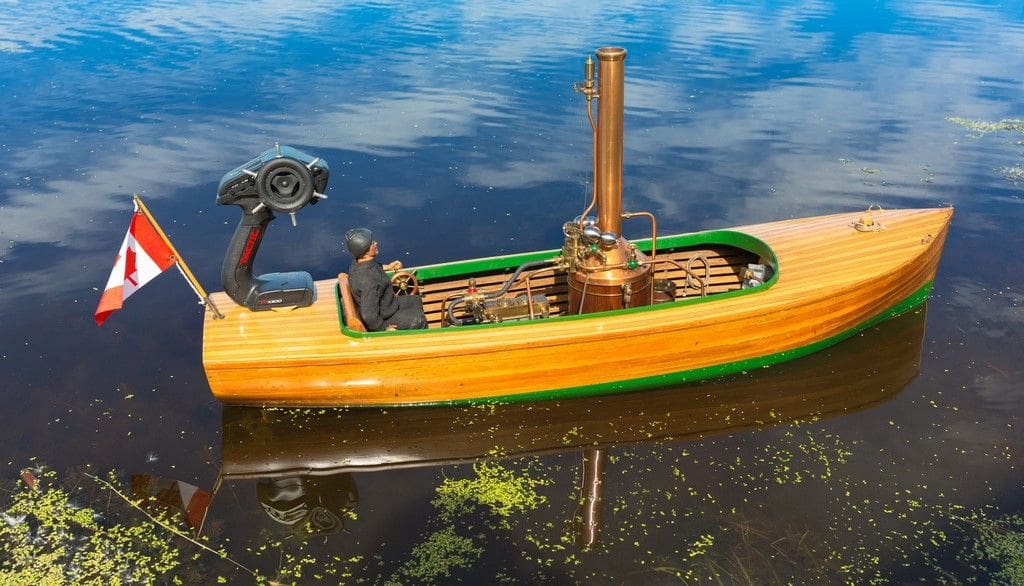
Mechanical features
Jennifer has many other interesting features, including an oil injector that is mounted on the steam inlet to the engine and mounted in front of the boiler is an oil separator that splits the used lubricating oil from the condensates that exit the engine and then expelled through the smoke stack. Beneath the footrest in front of the seat, is a water pump that is powered with a gear-driven jackshaft off the propeller shaft. This water pump provides lake water pumped through an inlet pipe in the hull and this is piped to the boiler via a line that has a check valve in place, so that the boiler pressure is kept away from the water pump.
The propeller shaft is supported on two needle roller bearings in a grease-packed brass tube that exits through the hull. There is another water pump on the other side of the engine that is hand-powered and is used to pump water into the boiler as it is being initially steamed. The pipe (line) from this pump also has a check valve in place within it and both lines from their respective pumps go over top of the engine which should be visible in the photos. Mounted under the upper boiler dome is a working feed water heater that pre-heats the water entering the boiler, plus a super heater that not unsurprisingly super-heats the steam entering the engine through the steam throttle allowing the twin cylinder engine to operate more efficiently.
The propeller
Initially not much thought went into this and going through a selection of propellers lying around from the r/c nitro fuelled power boats, one that looked about the right size was chosen, and almost at random. When the launch was steamed for the first time, it could not keep a head of steam and it was quickly realised that the pitch of the propeller, which was designed for a fast turning nitro (glow) engine, had the wrong pitch for a slow turning high torque steam engine.
As a result, and the workshop was waiting for something to do(!), a propeller of 2.5 inches diameter with a very coarse pitch was fabricated. With this completed and Jennifer back in the water, it was a whole new ball-game. With 30psi showing on the pressure gauge and the throttle wide open, one did not need to break into a run to keep up with Jennifer running at its top speed and more important, the boiler could now maintain its head of steam.
Radio control
The tray that this is mounted on is in the stern behind the seat which is removable to access it all. This actually makes it quite a pain to access the servos and receiver, but does mean a very scale looking steam launch with no 21st Century electronics visible on this 1890’s style craft.
Conclusion and on the water
With a full head of steam, Jennifer has a very realistic look on the water and one must walk quickly to keep up with it when at full speed. It is stable and safe on the water and the figure makes it all look more realistic. So many model boats have a ‘Marie Celeste’ look about them and open launches definitely need a crew of some sort, whatever their scale.
About the only thing not built in the domestic machine shop was the propane cylinder and its valve, the radio system to control it all and the certified miniature steam gauge purchased from the UK.
Enjoy your hobby –
Jerry Clement of Calgary, Alberta, Canada



